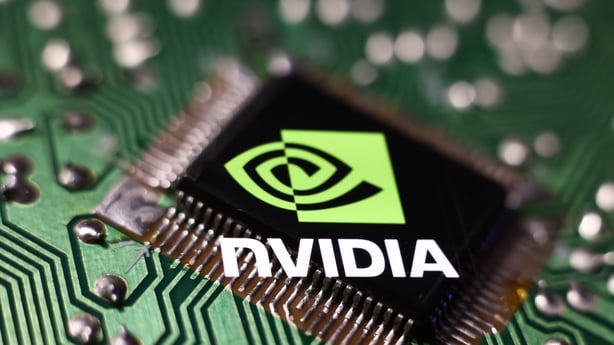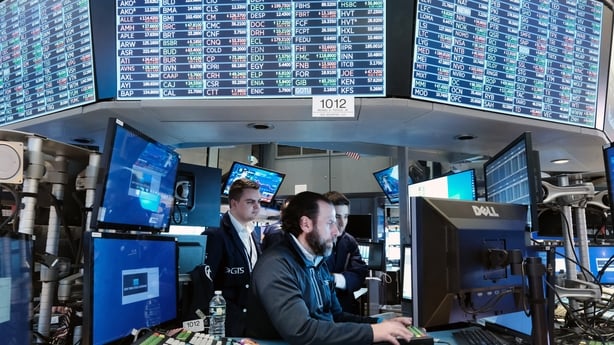Nothing lasts forever, as the adage goes.
And that looks increasingly to be the case for the relentless rise of the 'Magnificent seven' stocks.
These were the company names that shot to prominence in recent years as they drove a sustained rally on stock markets.
The rally was mainly fuelled by the buzz around Artificial Intelligence and the companies supporting the industry.
It all stemmed from the rollout of OpenAI's chatbot in November 2022 which ushered in an era of investor optimism around the potential for the technology to deliver new products, as well as lucrative earnings for tech companies.
Cue a sustained rally in the share prices of a few select names.
Rise of the seven
2022 was marked by an abrupt about-turn in the interest rate environment.
After years of low rates and muted inflation, the global picture changed suddenly following the Russian invasion of Ukraine.
A sharp rise in inflation was met with a decision by Central Banks globally to hike interest rates to record highs in order to bring inflation under control.
That precipitated a bruising year for stock markets in 2022. As investors eyed the rising rates environment, they saw little cause for optimism amid a tide of expensive money and recession prospects.
As the year drew to a close, the AI play came into sharp focus.
A select few stocks started to show signs of life.
Eventually taking on the moniker 'the Magnificent Seven', they included Meta, Amazon, Microsoft, Alphabet, Apple, Tesla and the star performer - microchip maker, Nvidia.
The rally continued into 2023 with the share prices of the seven rising by an average of 111% in the year. For Nvidia, the increase was even more spectacular - the stock gained 240% between January and December.
As time went by, a few of the seven started to fall behind the pack with Tesla under the cosh in particular against the backdrop of a challenged and increasingly competitive electric car market.

So, what happened?
The rally continued into this year but it appears to have come to an abrupt halt around the half way point.
In recent weeks, the stocks have started to sell off in spectacular fashion.
On Wednesday of last week, the 'Mag 7 megastocks' sustained their worst daily drop since the launch of ChatGPT.
In the two weeks from July 10th to the 24th, the seven had fallen more than 10% - leaving them firmly in correction territory for the first time in over a year and a half.
In that time, the seven saw more than $1.7 trillion wiped off their collective market capitalisation.
And the bad news has continued since.
The catalyst for the selloff appears to have been quarterly results from some of the companies in question.
While the outcome for most could be described as decent, the bar is being set higher and higher by virtue of the investor euphoria surrounding the companies.
"Coming into this earnings season, the 'Magnificent Seven' stocks really were up against almost an impossible expectation of beating perfection," Anna Rathbun, Chief Investment Office with CBiz Investment Advisory Services pointed out.
"So in some ways it's not surprising to see some sell-off here."
She explained that investors - having delivered the AI related hype quarter on quarter for over a year - now wanted to see some quantitative return for the billions of dollars that had been pumped into AI.
High bar
The selloff kicked off following the latest round of earnings from Tesla and Google parent Alphabet - the first of the seven to report.
Tesla had already slipped to the back of the pack in recent quarters and its earnings report didn't do much to help prospects for the stock.
It posted a 40% drop in profits, knocking its shares back more than 12% - the biggest one day drop this year.
On the other hand, Alphabet surpassed expectations for profit and sales growth, but ad revenues from YouTube weren't quite as strong as expected or hoped.
The company’s shares lost more than 5% in the day on signs that Alphabet’s aggressive investment in AI might take longer than hoped to pay off.
All told, the S&P 500 dropped 2.3% on Wednesday, July 24 - not an overly-dramatic fall in the scheme of things.
Aidan Donnelly, Head of Equities with Davy explained that the loss should be viewed in the context of the trade for the past eighteen months to two years.
He said that Wednesday marked the first day in a streak of 356 trading days - going all the way back to February 2023 - that the US large cap index registered a loss of more than 2% in a day.
"This was the longest such streak since we went 949 trading days from May 2003 to February 2007 without seeing that degree of daily move," he said.

The other chips
Even Nvidia has not been immune to the selloff.
Although its shares underwent something of a rally this week after rival AMD reported solid results, the stock shed more than 20% of its value in recent weeks from its record high set in mid-June, putting the stock in 'bear territory'.
While analysts await Nvidia's earnings at the end of the month, Aidan Donnelly suggested that they should cast the net wider when examining the overall perspective behind the recent selloff.
He explained that while the focus had fallen on technology and 'chip' stocks in particular, another kind of 'chip' stock was providing the bigger picture for what was happening.
A company called Lamb Weston - one of the biggest producers and suppliers of frozen potato products in the US - saw its share price falling by 28% on the day it released what analysts called 'disastrous' quarterly results.
The company said the outlook had softened amid slower restaurant traffic owing to ongoing price inflation and the weathering of the cushion of the stimulus checks that were doled out to American consumers during the Covid pandemic.
"When people don’t even want French fries, what is there left for the consumer to buy?" Aidan Donnelly asked.
"With data pointing to cooling inflation and slowing growth, the focus on whether the consumer can keep spending grows more intense. Concerningly, the share of credit card balances past due has risen to the highest since 2012, according to data from the Federal Reserve Bank of Philadelphia," he explained.
Fed play
That brings the role of the US Federal Reserve back into focus.
Having held off cutting interest rates for the bulk of a year against the inflationary backdrop and a relatively resilient economy, the picture could now be changing.
As widely anticipated, the Fed opted not to cut rates this week, but it is expected to press ahead with a rate cut at the next meeting.
In fact, traders have priced in a near 100% chance of a September rate reduction, according to the CME FedWatch Tool.
That is precisely what investors have been waiting for, which may in turn see money flowing from the basket of 'magnificent' stocks back into the wider market.
There is also the possibility that signs of a slowing economy and prospects of lower corporate earnings may prompt a retraction by investors who may adopt a 'wait and see' attitude on the sidelines.
"The future path of interest rates takes on an ever-increasing level of importance and, as a consequence, is and will continue to be an influence on equity market behaviour," Aidan Donnelly points out.
"The 'relief’ for both consumers and smaller companies of lower interest rates may take time to filter through to day-to-day activity, but the hope that this relief is forthcoming will be enough to change investor sentiment towards [some] cohorts of the market," he concluded.
So, is it game over for the 'magnificent seven'? The best they may hope for is that they will just have to share the investor love with a wider cohort of stocks from now on.
From a market risk concentration point of view, that may not be the worst outcome.






